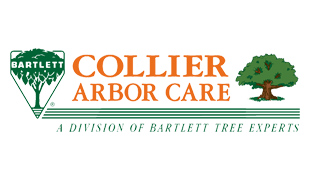|
Current Issue - Spring/Summer 2013 Show Back Issues |
|
||
 Dogwood leaves infected with anthracnose.
Dogwood leaves infected with anthracnose.
Anthracnose of Dogwood, Sycamore and Maple TreesAnthracnose is a fungal blight that infects Dogwood, Sycamore and Maple trees during the wet spring months. This disease affects trees by causing leaf blight that can lead to pre-mature leaf drop and in protracted infections, twig dieback and death. As is the case with most foliar diseases, wet weather is a huge contributing factor in the establishment and development of anthracnose. Most tree and shrub diseases tend to disappear from our landscapes as drier weather conditions arrive. Applications of foliar fungicides in the spring and dormant seasons help to protect newly- forming buds from infection. Once leaf material has become infected with anthracnose, there is little that can be done to control this disease until new growth replaces the fallen leaves. In severe cases anthracnose can become a systemic infection causing tip and branch dieback that can lead to significant branch loss within the trees canopy. Thinning and deadwood removal pruning can help to reduce the conditions within the trees canopy favorable to disease establishment. By opening up the trees canopy, light penetration into and air movement through the trees canopy can help to reduce disease damage. We can treat anthracnose on a preventative basis, contact our office to schedule an inspection of your landscape. Sub-surface Fertilization versus Mycorrhizae InjectionsOne of the most common questions asked by our clients is what is the difference between Fertilization and Mycorrhizae? Both are applied the same way: subsurface soil injections place the products in the root zones of plants. However, the products are totally different from one another. Fertilization supplies essential nutrients, like nitrogen, potassium and iron, required by plants for healthy growth and metabolic processes. Plant nutrients are akin to vitamins for people - when deficient, growth slows or stops and diseases, disorders, and discoloration occurs. Nutrient deficiencies may occur when plants use them up for growth or where construction or top soil removal has resulted in barren soils. Fertilization replaces deficient nutrients in the soil. Our subsurface fertilization blend contains a mixture of slow release nutrients to supply the correct amount of nutrients necessary for healthy plant growth. Mycorrhizae is a natural beneficial root fungus that helps trees and shrubs absorb water and nutrients. The tree roots and the mycorrhizae form a symbiotic, or beneficial, relationship. Mycorrhizae is common in natural forest settings, but urban trees and shrubs are often lacking in mycorrhizae. Urban trees struggle to grow because of disturbed, compacted soil, heavy clay, and nutrient deficient soils. The need for beneficial mycorrhizae is greater in urban soils because of these harsh unnatural soil conditions.  Sub-surface fertilizing by Sr. Plant Health Care Tech: Jeff Kowalski
Sub-surface fertilizing by Sr. Plant Health Care Tech: Jeff Kowalski
Over 30 years of research has shown mycorrhizae benefits trees by improving feeder root development, improving water and nutrient absorption, protecting against soil diseases, improving tree longevity and survival, and increasing survival rates of transplanted trees. The results on the growth and health of trees and plants treated with mycorrhizae have been dramatic. Both fertilization and mycorrhizae services are recommended to give your plants that boost for healthy growth and longevity. |
Proper Tree PlantingThe ideal time to plant trees and shrubs is in the dormant season, starting in fall, after leaf drop to early spring before bud break. However trees that are properly cared for in the nursery and with follow-up care after planting, can be planted throughout the growing season. Make sure you check for underground utilities and have them located prior to digging. 
Digging: Dig a wide shallow hole making it close to three times the size of the root-ball, but only as deep as the root-ball. New Tree Pest: Bronze Birch BorerPeople in the Willamette Valley now have a new landscape pest to deal with - the bronze birch borer, an insect native to North America. For years it has caused problems in the northeast and central part of the United States, but has only just recently been found in the Willamette Valley. Bronze birch borers are known to attack all native and introduced birch species. Trees that are weakened or stressed by drought, old age, insect defoliation, soil compaction, or a stem or root injury are most susceptible to attack.  Top: Bronze Birch Borer Adult Left: Hole made from Bronze Birch Borer Right: Destructive Larvae of Bronze Birch Borer Description:Adults are small beetles with a bronze body. The larvae stage is the most damaging. The larvae are white with a light brown head. Symptoms/Damage: The first symptom of a bronze birch borer problem is often yellow, sparse, stunted leaves in the upper portions of the tree which may progress to twig and branch dieback if larval populations are high. A sure sign of bronze birch borer damage is raised bark welts or ridges on the bark, caused by larvae tunneling beneath the bark. Repeated attacks by the larvae eventually disrupt nutrient transport and can lead to tree death. Also when the adult emerges, it leaves a distinctive D-shaped exit-hole about 1/5 inch wide in the bark. These D-shaped exit holes may be stained with rust colored sap. Life cycle: Adults emerge from previously infested trees between early May and early June. They then feed on the leaves of the birch, eventually laying eggs in bark crevices and cracks. Larvae hatch from the eggs and immediately begin to mine into the bark. The larvae damage trees by feeding on the inner bark and over wintering within the galleries. In spring the larvae pupate into adults within the galleries, thus completing the life cycle. Management: Management strategies that improve tree health will reduce susceptibility to the borer. Proper cultural practices include watering during dry, hot periods; mulching; avoiding wounds or injury to the tree; and pruning out dead and dying branches. Trees are unlikely to recover once 50% or more of the crown is damaged. Severely infested trees should be promptly removed and destroyed to reduce local borer populations. Systemic insecticide drenches around the base of stressed or lightly affected trees can prevent or help control outbreaks. Borer populations can also be reduced by applying insecticides to the bark to kill larvae before they enter the tree. All birch species can be attacked but the two most susceptible, the European birch and the white-barked Himalayan birch, are the most widely planted in our area. Call Collier Arbor Care to help protect or treat your favorite birch trees from this new problem.  The bright cinnamon exfoliated bark adds to the tree's four-season appeal.  The paper bark maple has reddish cedar-like bark, and feathery soft textured foliage. Featured Tree: Paper Bark Maple (Acer griseum)When thinking of what to plant for that special focal point in your landscape, Japanese maples are what usually come to mind. Consequently, northwest landscapes have an over-abundance of them planted. Consider then the exceptional, but overlooked and under-utilized paper bark maple - Acer griseum. Introduced in 1901 from China, the Acer griseum was basically ignored until recently. Originally the species was hard to propagate. Since then, it has slowly become available to the discriminating gardener. The paper bark maple is deciduous with a rounded canopy at maturity and a height of 20-30 feet. The leaves are trifoliate (three leaves) with soft, light green tops and slivery hue on the bottom. In the fall the foliage turns an extremely bright orange and red. The main attraction of this gem of a tree is the bright cinnamon exfoliating bark. It has four-season appeal and an extraordinary silhouette against a winter landscape. Our nursery has a good supply of this specimen tree available for planting in your landscape. |
|
Home |
Services |
The Arbor Advisor |
Garden Calendar |
About Us |
Fact Sheets |
Contact Us |
Site Map Collier Arbor Care Portland 503-722-7267 Vancouver (360) 693-6056 Site contents and design ©2013 Collier Arbor Care |







 top »
top »